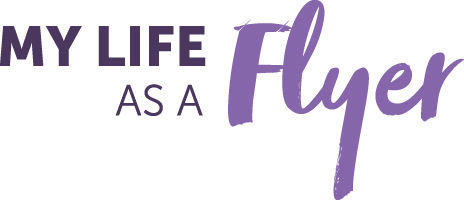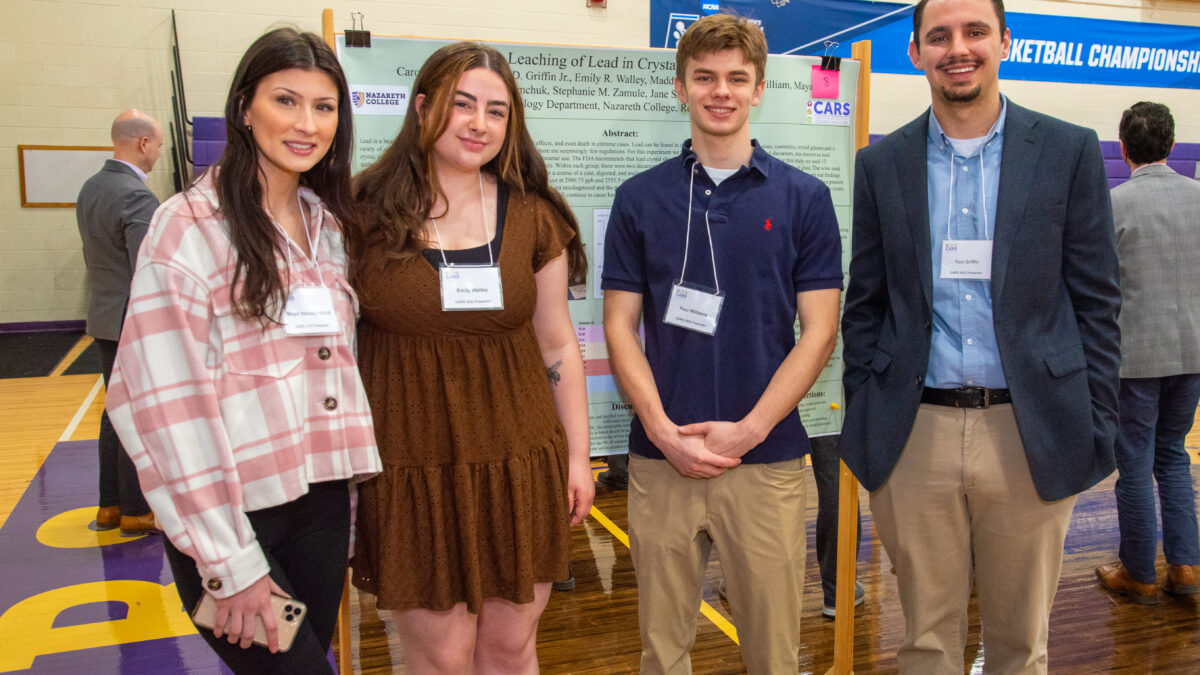Our team researched how much lead can lead into wine from crystal decanters, and we presented our results at Nazareth’s 2022 Creative Activity and Research Showcase (CARS) poster session.
My teammates: Emily Walley ‘22, Tom Griffin ‘22, Paul Williams ‘23, Maddie Willett ‘22, Maya Harasymchuk ‘22, and Emma Beiter ‘25.
What did you do?
For the past year and a half, we have been researching lead leaching out of crystal wine decanters; it was a lot of hands-on experience!
So what is lead? Lead is a heavy metal that can cause a variety of adverse neurological effects, and even death in extreme cases. Lead can be found in numerous places, including paint, gasoline, cosmetics, crystal glasses, and a variety of consumer products. With lead being present in many objects, there are surprisingly few regulations for consumer products. For this experiment we focused on crystal wine decanters. Crystal decanters, also known as lead crystal, contain lead as a reinforcing agent which may leach out during consumer use; lead is infused into the glass to make it stronger, but can ‘leak’ out and into wine or other liquids. The United States Food and Drug Administration (FDA) recommends that lead crystal should not be used every day for wine consumption.
For this study we used 12 decanters in groups of 4 with wines with various sugar contents and pH levels. Within each group, there were two decanters that had various levels of lead and one control, which was made of glass. The wine we used was pink moscato, white wine, red wine, and water. These are common wines and we wanted to make it as realistic as possible. Samples were taken over a course of a year and a half, brought down into our Peckham lab, and analyzed using atomic emission spectroscopy to determine if lead had leaked into the wine. From our findings at the 60-day mark, pink moscato showed the highest levels of lead leaching out at 2900.75 ppb (parts per billion) and 2551.5 ppb. For context, the legal limit for lead in water is 15 ppb, so the levels found in the wine were highly concerning!
We then worked as a team to put our information together and share it with the Nazareth and Rochester community. We were able to talk with community members who have lead crystal decanters, conduct field work with local urban gardens to test for lead, and continue to work with lead in other areas.

What was cool about presenting your research?
The research shared in our CARS presentation has been in the making for the past year and being able to finally show off what we have done has been the most rewarding so far. We had the chance to present to the Nazareth community — including many of our friends and colleagues — and it was really interesting to see their reactions to our results. Being able to go into the community and talk with residents about how the lead levels affect their day to day lives was very eye opening and gave us a lot of motivation to continue this work. I am very proud of the work that we have put into this project and excited to see where this goes in the future! Some of our future plans include writing our findings into a paper to be published and to continue our work with lead contamination within the community. This summer, we have dived into potting soil and testing to make sure these are safe for use. We also are continuing to work with a farm in Naples to test their gardens for lead contamination.
What did you learn?
During the course of this experience, we were able to learn more about how to look at data in an analytical way, learn how to communicate within the scientific community and to other community members, and be able to strengthen our teamwork skills. We were able to spread awareness of the dangers of lead poisoning and to design our own experiment to have hands-on experience. We also learned more about the lack of regulation in lead and the dangers to health from exposure to lead.
Why did this matter?
There is very little regulation of lead levels for various liquids. The regulation of lead stops at drinking water and does not include any guidance on substances that potentially leach lead, such as crystal decanters. Our research has shown that significantly high levels of lead can leach from crystal, and based on the serious health implications of lead levels in blood, it is of the utmost importance that we share this information with health officials. We hope to have our paper published, to allow our findings on lead to be shared and seen by those who regulate health policies and by the public, to help create change in regulations. So far, we have a detailed outline completed and during the course of the summer we have been chipping away at the paper with the goal to submit it by the end of the fall semester.
—
Carolyn Carlic ‘23 is a double major in environmental science & sustainability and religious studies with minors in biology and sociology. Emily Walley ‘22 majored in environmental science & sustainability with a minor in public health. Tom Griffin ‘22 and Maddie Willett ‘22 majored in environmental science & sustainability with minors in biology and toxicology. Paul Williams ‘23 is a biomedical sciences major with a pre-med minor. Maya Harasymchuk ‘22 majored in environmental science & sustainability with a pre-vet minor. Emma Beiter ’25 is a biomedical sciences major with a minor in dance.

